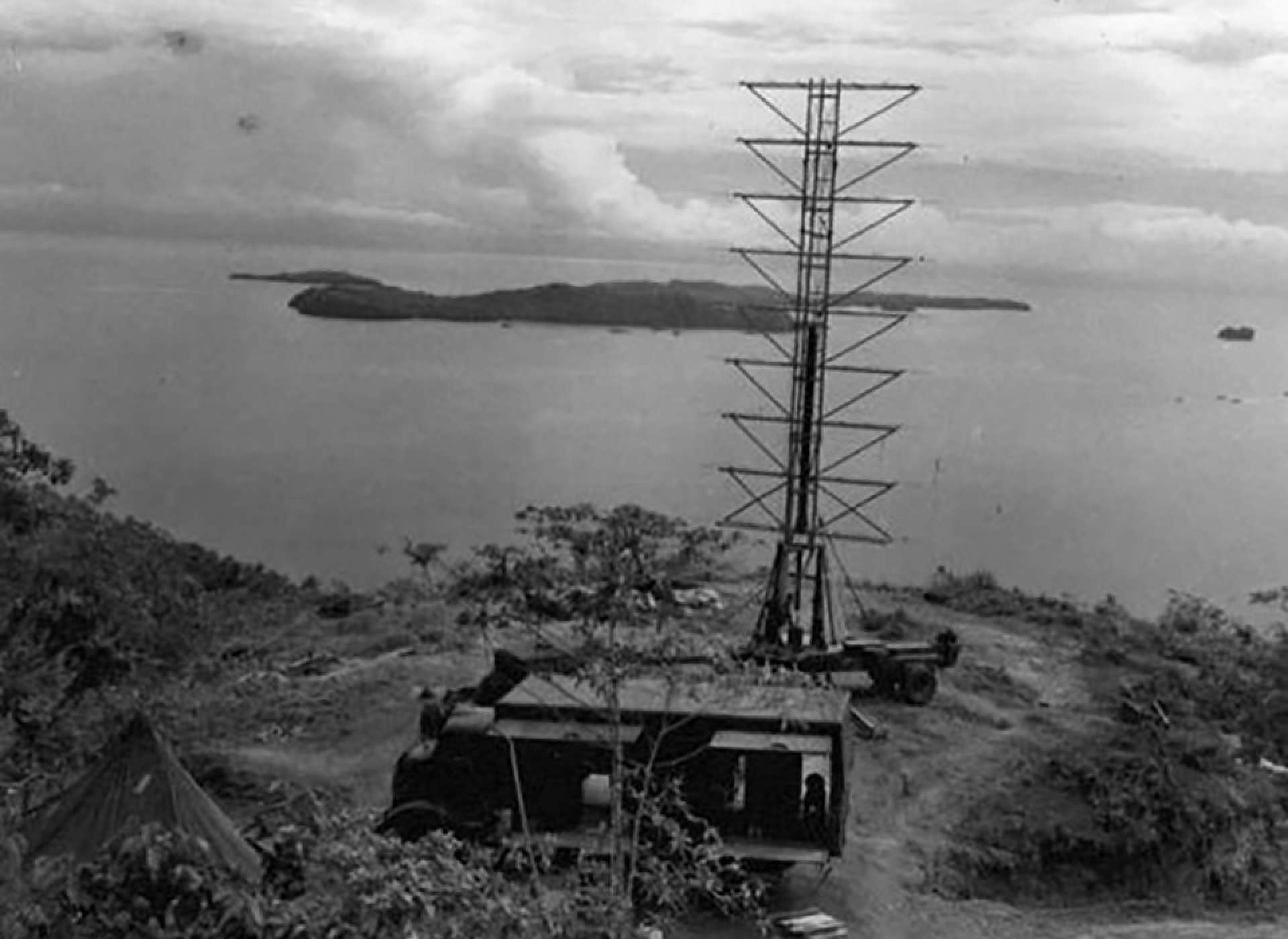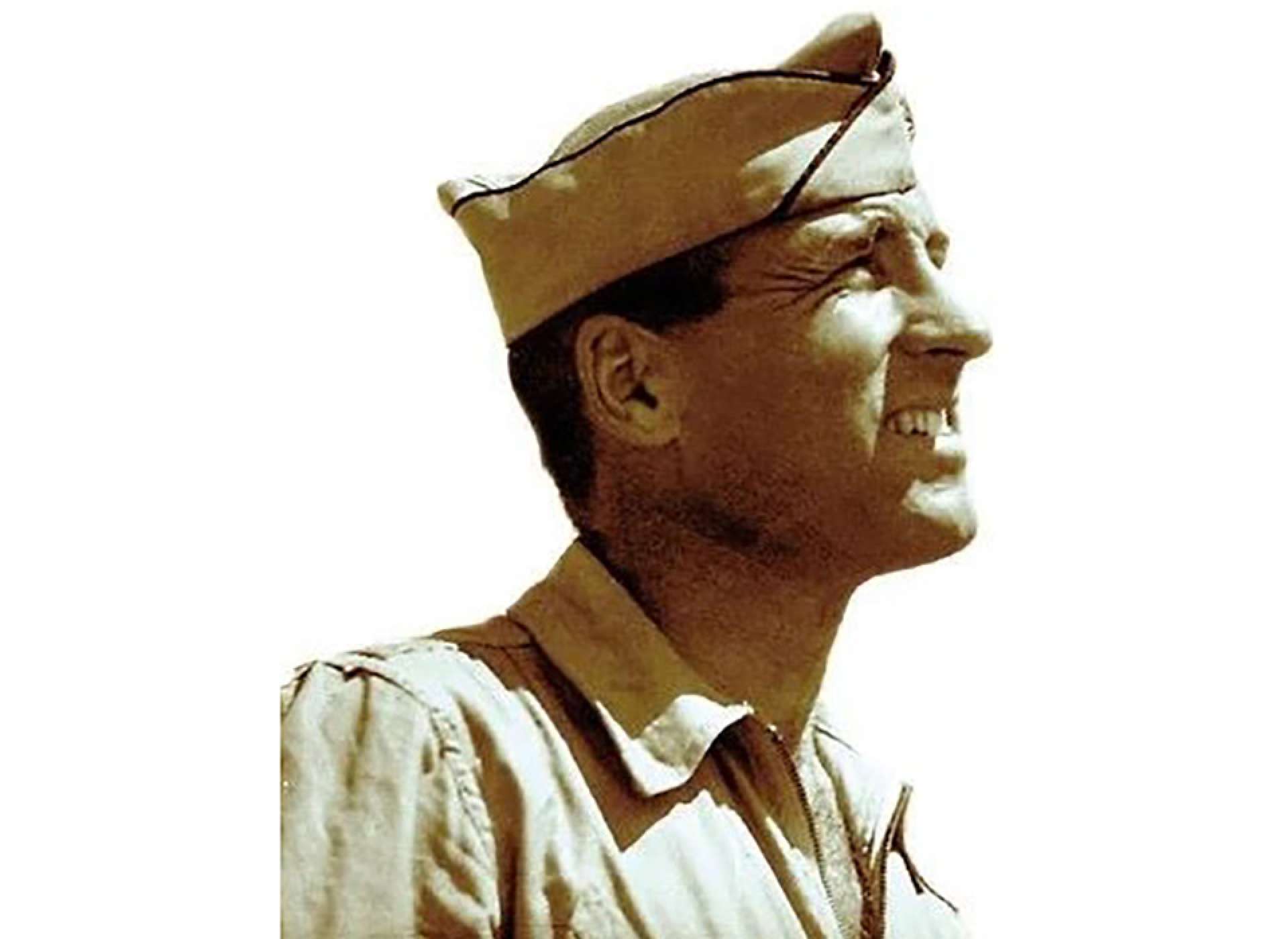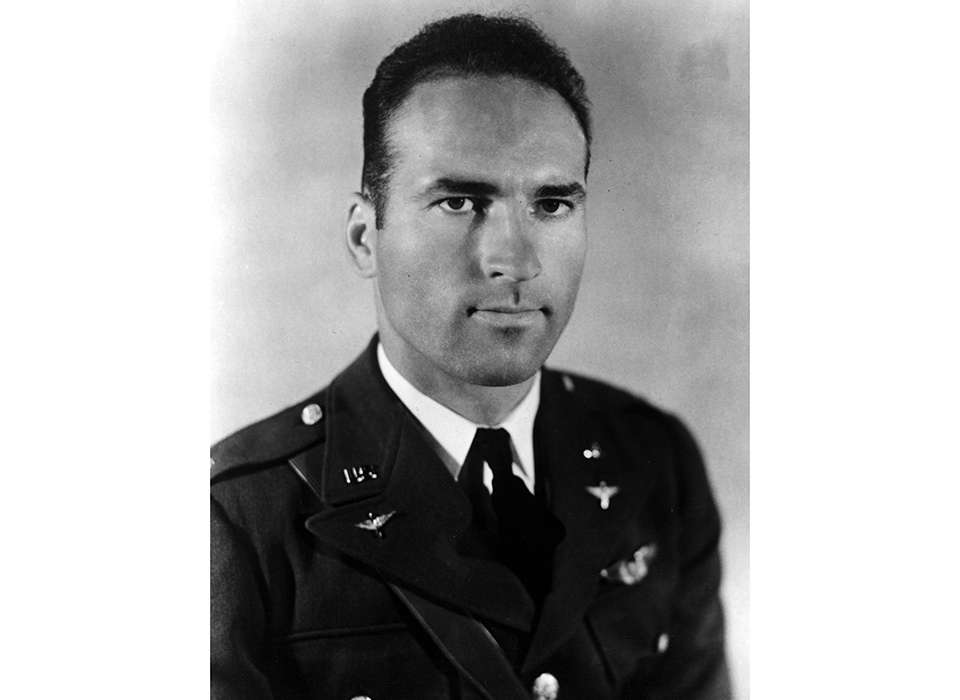Kermit Tyler’s experiences as a fighter pilot in World War II were similar to many other fighter pilots who served in the Pacific theater, with one notable exception—on the morning of December 7, 1941 he was the officer in charge of the air information center at Fort Shafter on O’ahu who mistook the radar image of an incoming wave of Japanese attack aircraft for a flight of B-17 bombers he expected from the US mainland. Tyler’s response to the radar operator who reported the contact that morning to “don’t worry about it” would be grounds for countless historians, military professionals, armchair generals, and conspiracy theorists over the past eight decades to critique and criticize his actions that day and to argue over whether he could’ve prevented the significant loss of life sustained in the attack or even stopped the attack on Pearl Harbor itself.
Kermit Tyler was born in Fayette County, Iowa in 1913 and grew up just outside of Los Angeles, California. His interest in flying began when he was a child and was continually fueled by the exhibitions put on by traveling barnstormers throughout the 1920s. At the age of 19, Tyler enlisted in the Marine Corps Reserve and, during his drill weekends, he would help work on planes after the pilots finished their training for the day in the hopes of getting a ride in one of them.
By 1936, Tyler had fulfilled his obligation to the Marine Corps and had completed two years of college. Tyler had always had an interest in aviation so, knowing he possessed all he needed to qualify for flight training, he dropped out of college and volunteered for the US Army Air Corps Aviation Cadet Program. After being accepted, he was sent to San Antonio, Texas, where he took his primary and basic flight training at Randolph Field and then completed his advanced training at Kelly Field. In 1937, Tyler was awarded his pilot’s wings and received a commission as a second lieutenant in the US Army Air Corps Reserve.
At Kelly Field, Tyler had been trained as an observation pilot, so after getting his wings he was sent to Moffett Field in Santa Clara County, California where he spent the next three years pulling target sleeves and spotting for artillery units. He enjoyed the limited flying he was able to do but wanted more out of his career in military aviation, so when the opportunity to train as a pursuit pilot came, he accepted it.
In October 1940, Tyler was sent to Hamilton Field in Novato, California, where he transitioned to flying fighter aircraft. Later, Tyler became a member of the 35th Pursuit Group. Since the group had just arrived at Hamilton Field, however, Tyler was one of only two pilots in the squadron he was assigned to. The other pilot was Clinton “Casey” Vincent, a famous personality in Air Force circles. Unfortunately, with aviation operations in such a disorganized state at that time, Tyler’s future was uncertain and he was not happy at Hamilton Field. Still, he loved flying, so he toughed out the assignment and waited for something better to come along.
By the spring of 1941, the US Army Air Corps had activated several new pursuit groups. When Tyler learned of one such new outfit in Hawai’i that had slots available for pilots, he requested a transfer. His request was approved and, in February 1941, Tyler joined the 78th Pursuit Squadron, 18th Pursuit Group, based at Wheeler Field on O’ahu, Territory of Hawai’i. After arriving in Hawai’i, he and a squadron-mate named Charles H. “Mac” MacDonald, who would end the war as a successful fighter ace with 27 confirmed victories and later retire from the US Air Force with the rank of Colonel, rented a house on Kawailoa Beach on O’ahu’s North Shore. There, the young aviators lived an “idyllic” life. It was also there that Tyler developed his life-long love of surfing. By the fall of 1941, Tyler had been promoted to First Lieutenant and was serving as the executive officer of the 78th Pursuit Squadron. Life in the islands for Kermit Tyler was good.
In an effort to familiarize pursuit pilots with the new radar systems being installed around the Hawaiian Islands, Army Air Forces Major Kenneth P. Bergquist, the operations officer for the Hawaiian Interceptor Command, arranged to have the various pursuit groups based in Hawai’i send pilots to the information center at Fort Shafter in Honolulu to work shifts with the air information controllers. The job of the controllers was to process and track reports coming into the center from the Signal Aircraft Warning Service radar stations positioned around the islands.
Once a suspected enemy contact had been picked up by radar, that contact report would be sent to the information center at Fort Shafter. The center would then plot the contact on a map and send out pursuit aircraft to meet it. The process of locating threats via radar and dispatching aviation assets to meet them were all fairly new in the US military. Servicemembers had to be trained to operate the new technology and perform the necessary tasks associated with them.
Kermit Tyler’s turn to learn this new technology came during the first week of December 1941. At 4:00 a.m. on Wednesday, December 3, Tyler arrived for his first four-hour shift in the information center. Officially, his job there was to assist the controllers in vectoring pursuit aircraft to meet any identified incoming enemy threats, however, he was really there to learn about this new process and how it worked. Though he had received a brief orientation in mid-November, Tyler received no training before, during, or after his first shift and nothing of note occurred during that first four hours. Therefore, when Tyler showed up to work his second shift at 4:00 a.m. on Sunday, December 7, 1941, he had no reason to think that morning would be any different. How wrong he was.
Prior to his assignment in the information center, Tyler had been told by a friend who served with the bomber forces that when groups of bombers flew to Hawai’i from the US mainland, they were guided in by a radio station on O’ahu that would play Hawaiian music non-stop with no interruptions for commercials or news updates. When Tyler drove from his home on O’ahu’s north shore to Fort Shafter on the morning of December 7, he noticed that there were no interruptions to the music. Remembering what his friend told him, Tyler expected a flight of bombers to arrive that morning.
At 4:00 a.m. on Sunday, December 7, 1941, Tyler opened the air information center at Fort Shafter. In the center with him that morning was roughly a half dozen enlisted men. He was the only officer present. The first three hours of that morning’s four-hour shift passed by uneventfully. The radar stations positioned around the islands would all shut down at 7:00 a.m. so the crew in the information center did not expect to receive any calls during the last hour of the shift.

SCR-270 radar installation. Operators at a similar installation at Opana on the northern tip of O'ahu detected and tracked unknown aircraft, starting around 7:02 a.m., that were approaching from the North. These turned out to be Japanese planes on their way to attack Pearl Harbor about 50 minutes later. However their report was not acted upon. Image courtesy of the US Army.
According to Tyler, at approximately 7:15 a.m., the information center received a call from the Opana Radar Station located in the north end of O’ahu. The radar technicians on duty that morning, Army Privates Joseph Lockard and George Elliott Jr., reported the “largest blip they had ever seen” on their SCR-270 radar’s oscilloscope. The course they reported the incoming contact on was almost a direct line between San Francisco and O’ahu. Hearing that, and recalling that he had heard Hawaiian music playing without interruption a few hours earlier, Tyler reasoned that the blip the radar technicians were seeing was not an enemy formation, but was instead a flight of friendly bombers approaching O’ahu from San Francisco. Tyler told Lockard and Elliott not to worry about what they were seeing.
Shortly after talking to Tyler, Lockard and Elliott went off duty. History has shown what happened next. At 7:55 a.m., approximately 53 minutes after the “blip” representing the Japanese attack aircraft had been seen on the SCR-270 radar’s oscilloscope, and 40 minutes after Tyler told Lockard and Elliott not to worry about what they were seeing, the attack on Pearl Harbor began. The Japanese assault left thousands dead, caused millions of dollars in damage, and catapulted the United States into World War II. But what happened to Kermit Tyler after December 7, 1941?
Tyler remained with the 78th Pursuit Squadron until September 1942 when he took command of the 44th Fighter Squadron, a P-40 Warhawk squadron based at Bellows Field in Waimānalo, O’ahu, Hawai’i. After a brief training period Tyler, then a Major, took the 44th Fighter Squadron to Efate, New Hebrides. At Efate, the squadron continued training, then began sending out patrols to Guadalcanal. The 44th Fighter Squadron later moved its operations to Guadalcanal and continued flying combat sorties from there.

Kermit Tyler, date and location unknown. Image courtesy of Kermit Tyler.
By June 1943, Tyler had been promoted to lieutenant colonel and was serving as the operations officer for the XIII Fighter Command, a position he held until returning to the United States in May 1944. Then, in February 1945, he returned to the Pacific theater, this time as a representative of the Air Force Board. By the end of the war, Tyler had spent roughly 26 months in the Pacific theater, during which he had flown numerous missions in P-40s and P-38s and had several encounters with the Japanese.
Kermit Tyler retired from the US Air Force on July 31, 1961 with the rank of Lieutenant Colonel after 25 years of service—four years in the Marine Corps and 21 years in the Air Force. After leaving the service, he went into the real estate business and had a successful career.
Beginning shortly after the Pearl Harbor attack, Tyler was called before several boards of inquiry to account for his actions on the morning of December 7, 1941, the first being the Roberts Commission. He was later called to appear before boards of inquiry set up by both the Army and Navy. All of the boards Tyler went before found that he had not been derelict or negligent in his duties and was not culpable for the results of the attack on Pearl Harbor.
Still, Tyler always believed that being called before numerous boards of inquiry prevented him from attaining a rank higher than lieutenant colonel. Kermit Tyler passed away on January 23, 2010 at the age of 96. Until the day he died, Tyler was second guessed and, in some cases, vilified for his actions at Pearl Harbor.
View Kermit Tyler's full oral history on the Museum's Digital Collections website.
Joey Balfour
Joey Balfour is the Assistant Director of Oral History at The National WWII Museum and oversees the collection, preservation, of curation of the interviews housed in the Museum’s Oral History Collection.
Cite this article:
MLA Citation:
APA Citation:
Chicago Style Citation:








